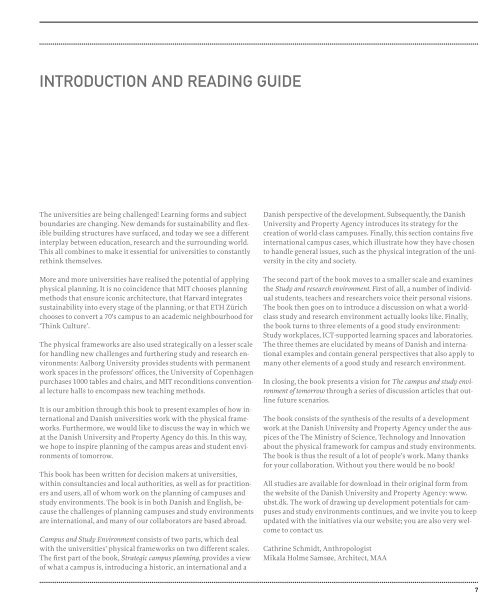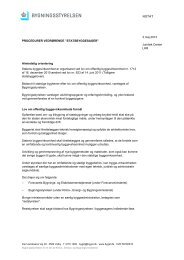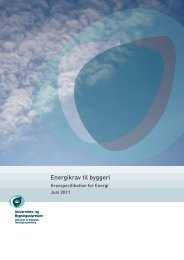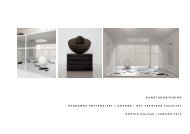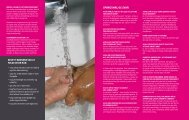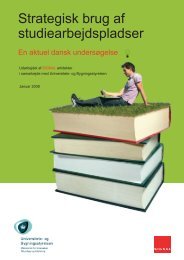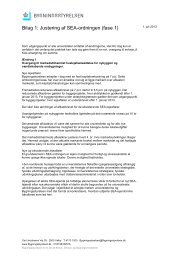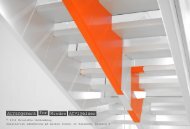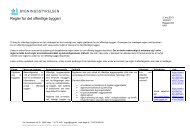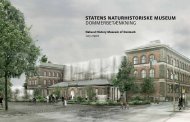Campus og studiemiljø - Bygningsstyrelsen
Campus og studiemiljø - Bygningsstyrelsen
Campus og studiemiljø - Bygningsstyrelsen
You also want an ePaper? Increase the reach of your titles
YUMPU automatically turns print PDFs into web optimized ePapers that Google loves.
introduCtion and reading guide<br />
The universities are being challenged! Learning forms and subject<br />
boundaries are changing. New demands for sustainability and flexible<br />
building structures have surfaced, and today we see a different<br />
interplay between education, research and the surrounding world.<br />
This all combines to make it essential for universities to constantly<br />
rethink themselves.<br />
More and more universities have realised the potential of applying<br />
physical planning. It is no coincidence that MIT chooses planning<br />
methods that ensure iconic architecture, that Harvard integrates<br />
sustainability into every stage of the planning, or that ETH Zürich<br />
chooses to convert a 70’s campus to an academic neighbourhood for<br />
‘Think Culture’.<br />
The physical frameworks are also used strategically on a lesser scale<br />
for handling new challenges and furthering study and research environments:<br />
Aalborg University provides students with permanent<br />
work spaces in the professors’ offices, the University of Copenhagen<br />
purchases 1000 tables and chairs, and MIT reconditions conventional<br />
lecture halls to encompass new teaching methods.<br />
It is our ambition through this book to present examples of how international<br />
and Danish universities work with the physical frameworks.<br />
Furthermore, we would like to discuss the way in which we<br />
at the Danish University and Property Agency do this. In this way,<br />
we hope to inspire planning of the campus areas and student environments<br />
of tomorrow.<br />
This book has been written for decision makers at universities,<br />
within consultancies and local authorities, as well as for practitioners<br />
and users, all of whom work on the planning of campuses and<br />
study environments. The book is in both Danish and English, because<br />
the challenges of planning campuses and study environments<br />
are international, and many of our collaborators are based abroad.<br />
<strong>Campus</strong> and Study Environment consists of two parts, which deal<br />
with the universities’ physical frameworks on two different scales.<br />
The first part of the book, Strategic campus planning, provides a view<br />
of what a campus is, introducing a historic, an international and a<br />
Danish perspective of the development. Subsequently, the Danish<br />
University and Property Agency introduces its strategy for the<br />
creation of world-class campuses. Finally, this section contains five<br />
international campus cases, which illustrate how they have chosen<br />
to handle general issues, such as the physical integration of the university<br />
in the city and society.<br />
The second part of the book moves to a smaller scale and examines<br />
the Study and research environment. First of all, a number of individual<br />
students, teachers and researchers voice their personal visions.<br />
The book then goes on to introduce a discussion on what a worldclass<br />
study and research environment actually looks like. Finally,<br />
the book turns to three elements of a good study environment:<br />
Study workplaces, ICT-supported learning spaces and laboratories.<br />
The three themes are elucidated by means of Danish and international<br />
examples and contain general perspectives that also apply to<br />
many other elements of a good study and research environment.<br />
In closing, the book presents a vision for The campus and study environment<br />
of tomorrow through a series of discussion articles that outline<br />
future scenarios.<br />
The book consists of the synthesis of the results of a development<br />
work at the Danish University and Property Agency under the auspices<br />
of the The Ministry of Science, Technol<strong>og</strong>y and Innovation<br />
about the physical framework for campus and study environments.<br />
The book is thus the result of a lot of people’s work. Many thanks<br />
for your collaboration. Without you there would be no book!<br />
All studies are available for download in their original form from<br />
the website of the Danish University and Property Agency: www.<br />
ubst.dk. The work of drawing up development potentials for campuses<br />
and study environments continues, and we invite you to keep<br />
updated with the initiatives via our website; you are also very welcome<br />
to contact us.<br />
Cathrine Schmidt, Anthropol<strong>og</strong>ist<br />
Mikala Holme Samsøe, Architect, MAA<br />
7


